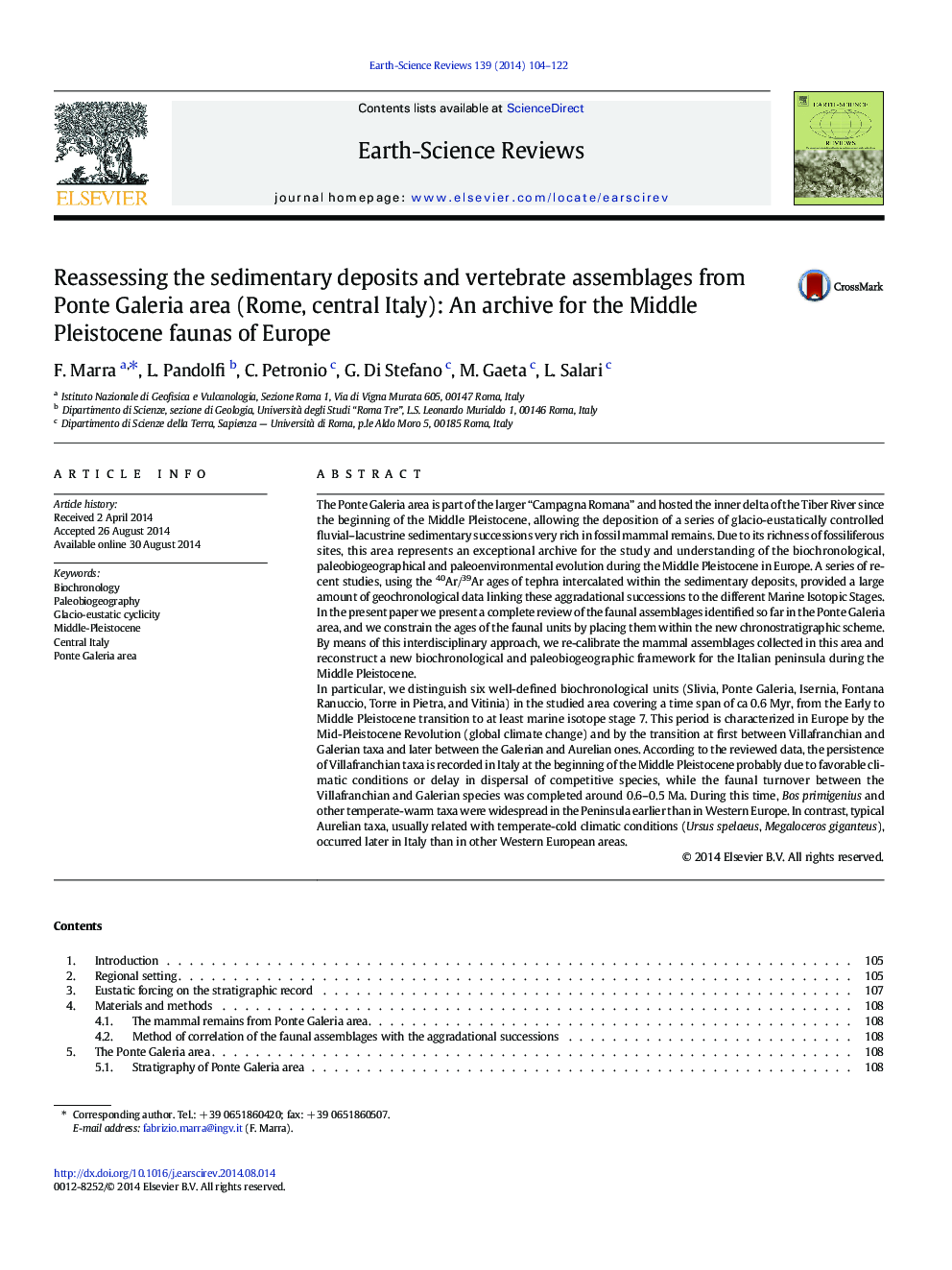| Article ID | Journal | Published Year | Pages | File Type |
|---|---|---|---|---|
| 6443114 | Earth-Science Reviews | 2014 | 19 Pages |
Abstract
In particular, we distinguish six well-defined biochronological units (Slivia, Ponte Galeria, Isernia, Fontana Ranuccio, Torre in Pietra, and Vitinia) in the studied area covering a time span of ca 0.6Â Myr, from the Early to Middle Pleistocene transition to at least marine isotope stage 7. This period is characterized in Europe by the Mid-Pleistocene Revolution (global climate change) and by the transition at first between Villafranchian and Galerian taxa and later between the Galerian and Aurelian ones. According to the reviewed data, the persistence of Villafranchian taxa is recorded in Italy at the beginning of the Middle Pleistocene probably due to favorable climatic conditions or delay in dispersal of competitive species, while the faunal turnover between the Villafranchian and Galerian species was completed around 0.6-0.5Â Ma. During this time, Bos primigenius and other temperate-warm taxa were widespread in the Peninsula earlier than in Western Europe. In contrast, typical Aurelian taxa, usually related with temperate-cold climatic conditions (Ursus spelaeus, Megaloceros giganteus), occurred later in Italy than in other Western European areas.
Related Topics
Physical Sciences and Engineering
Earth and Planetary Sciences
Geology
Authors
F. Marra, L. Pandolfi, C. Petronio, G. Di Stefano, M. Gaeta, L. Salari,
